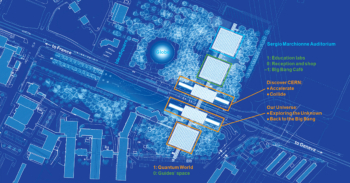
The Rio de Janeiro-based Centro Latinoamericano de Física (CLAF) celebrated its 40th anniversary on 26 March. Founded under the auspices of UNESCO following the CERN model, CLAF was established to promote research in physics and provide postgraduate training to young physicists in the region. The physicists Juan José Giambiagi of Argentina, José Leite Lopes of Brazil and Marcos Moshinsky of Mexico were instrumental in its creation. Today, CLAF has 13 member states.
The celebrations took the form of a week-long international meeting in Rio that focused on CLAF’s international collaborations and looked at the long-term future of the centre. Speakers included Faheem Hussain of the International Centre for Theoretical Physics in Trieste, Italy, which has been involved in a programme of joint PhD work with Latin American institutions since 1997. Vladimir Kadyshevsky, director of the Dubna-based Joint Institute for Nuclear Research, and Pavel Bogoliubov, who is responsible for the institute’s international relations, spoke of a 4-year-old programme to train Latin American graduate students in Russia, and of the 25 MeV microtron built at Dubna to form the basis of a proposed regional laboratory in Havana, Cuba. CERN’s Juan Antonio Rubio, who is responsible for the laboratory’s education and technology transfer activity as well as links with Latin America, spoke of the agreement signed in 2001 between CERN and CLAF to organize a joint biennial school in Latin America. Staying with education, Ramón Pascual, former rector of the Universidad Autónoma in Barcelona, signed an agreement at the meeting allowing Latin American students to take part in the European Joint Universities Accelerator School.
Research was discussed by Ana María Cetto, coordinator of the Latin American Scientific Networks, who spoke of a project to foster greater Latin American use of observatories in Chile and the possibility of extending the facilities at Mount Chacaltaya in Bolivia.
Looking to the future, CLAF support for the second CERN-CLAF school to be held in Mexico in 2003 was confirmed at the meeting, and CLAF announced the creation of a biennial school in medical physics and synchrotron radiation. The centre is also promoting improvements in postgraduate education through the ICTP programme and by coordinating a regional Masters degree programme. In research, CLAF will assume a stronger role in coordinating Latin American efforts in medical physics, condensed-matter physics and optics. It will also examine the possibility of building a proton accelerator for cancer treatment. The meeting concluded with a request to the governments of Latin America to increase their percentage of GDP spending on science and technology.





